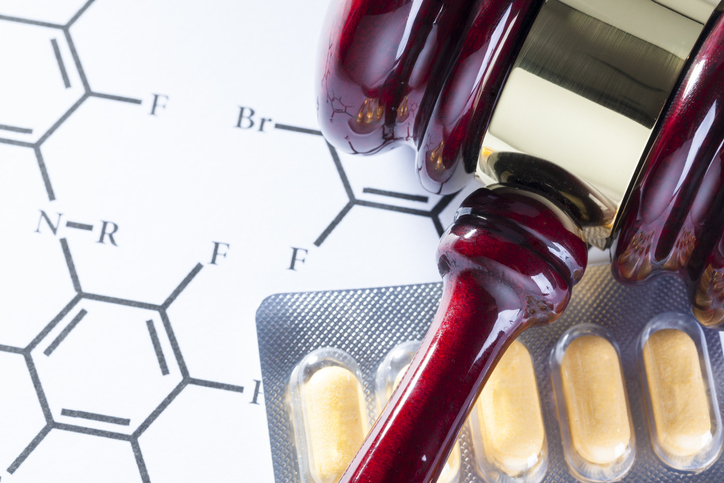In response to the latest PRC Patent Law, the CNIPA has revised the Guidelines for Patent Examination. Hai Liu from AWA Asia in Beijing discusses the key changes, with some favourable amendments for applicants.
Following the fourth amendment to the PRC Patent Law by the Standing Committee of the National People’s Congress in October 2020, the China National Intellectual Property Administration (CNIPA) initiated a comprehensive review of the Guidelines for Patent Examination (Examination Guidelines 2019).
The Decision to Amend the Guidelines for Patent Examination (Examination Guidelines 2021) was issued by the CNIPA on December 11, 2020. The amendments represent a major development in the field of patent law in China and entered into force on January 15, 2021
The amendments in the Examination Guidelines 2021 focused on chemistry and biotechnology inventions, clarified longstanding issues over supplementary experimental data, novelty and inventive step of compounds and also responded to challenges from the development of biotechnology such as monoclonal antibodies, peptides and proteins.
In this article, we summarise the amendments.
Part II Substantive Examination
Chapter 10 Provisions on Examination of Invention Applications in the Field of Chemistry
3. Sufficient Disclosure of Chemical Invention
3.5 Regarding Supplementary Experimental Data
The Examination Guidelines 2019 stipulated that the examiner shall review supplementary experimental data after the filing date. However, the Examination Guidelines 2021 amends this to read as follows: “the examiner shall review the experimental data supplemented by the applicant after the filing date in order to meet the requirements of Article 22, Paragraph 3 and Article 26, Paragraph 3 of the Patent Law.”
This amendment clarifies that in two typical cases, for example, when evaluating inventive step and full disclosure of the specification, the examiner shall review the supplementary experimental data submitted after the filing data. Meanwhile, the examination principle remains unchanged, that is, the technical effects proved by the supplementary experimental data should be obtained by those skilled in the art from the patent application disclosure.
In addition, two specific examples have been added to the Examination Guidelines 2021, illustrating in detail that supplementary experimental data for drug patent applications can be accepted in the above two cases following the examination principle.
Part II, Chapter 10
4. Claim of Chemical Invention
4.2 Claim of Composition
4.2.3 Other Definition for Claim of Composition
The Examination Guidelines 2019 stipulated that “if there is only one property or use of the composition disclosed in the specification, the composition shall be drafted as the function-defining or use-defining type”, but the Examination Guidelines 2021 amends “shall be” to “usually needs to be”.
This means that the Examination Guidelines 2021 provide the possibility of writing a non-limiting claim for a composition where the specification discloses only one property or use. This brings a wide range of possibilities for inventors of the composition to sufficiently protect their technical solutions.
Part II, Chapter 10
5. Novelty of Chemical Invention
5.1 Novelty of Compound
In the Examination Guidelines 2019, a compound claimed in a patent application is considered to not be novel if the compound has been mentioned in a reference document. It is presumed that the compound claimed is not novel, unless the applicant can provide evidence to prove that the compound cannot be obtained before the filing date. By “mentioned”, it means that the reference document clearly defines or explains the chemical name, molecular formula (or structural formula), physical and chemical parameters or preparation methods (including raw materials) of the compound.
The Examination Guidelines 2019 also clarify that even if the name and the molecular formula (structural formula) of the compound disclosed in the reference document are unclear, but the reference document discloses the same physical and chemical parameters or other parameters or preparation methods as those of the claimed compound, it is presumed that the claimed compound is not novel.
The Examination Guidelines 2021 amend the interpretation of “mentioned” and stipulate that if the chemical name, molecular formula (or structural formula) and other structural information of a compound is recorded in a reference document so that those skilled in the art believe that the claimed compound has been disclosed, the compound is not novel, unless the applicant can provide evidence to prove that the compound cannot be obtained before the filing date.
The Examination Guidelines 2021 delete the provision that even if the chemical name and molecular formula (structural formula) are not disclosed in the reference document, the compound can still be presumed not to be novel based on the same physical and chemical parameters or other parameters or preparation methods disclosed in the reference document as those of the claimed compound.
The Examination Guidelines 2021 added a new provision that if the structural information recorded in a reference document is not sufficient to determine the structural similarities and/or differences between the claimed compound and the compound disclosed in the reference document, but after comprehensive consideration of other information recorded in the reference document, including physical and chemical parameters, preparation methods and experimental data, those skilled in the art have reason to assume that the two are substantially the same, then the claimed compound is not novel, unless the applicant can provide evidence to prove that the structure is indeed different.
The Examination Guidelines 2021 clearly distinguish between “disclosed by records” and “presumed not to be novel” and require examiners to comprehensively consider various factors and should be cautious to make an assessment of “presumed not to be novel,” which is beneficial to applicants.
Part II. Chapter 10
6. Inventive Step of Chemical Invention
6.1 Inventive Step of Compound
Different from the general three-step approach for assessing whether an invention is inventive or not, the Examination Guidelines 2019 stipulated an approach for assessing the inventive step of a compound as follows:
- Step 1, the structure of the claimed compound is compared with the structure of a known compound;
- Step 2, for compounds that are novel and not structurally close to known compounds, they do not need to have unexpected uses or effects in order to be considered inventive; but for compounds that are structurally close to known compounds, they must have unexpected uses or effects in order to be considered inventive.
The Examination Guidelines 2021 have made significant changes here and stipulate that regardless of whether the structure of the claim compound is structurally close to an existing compound, the “three-step approach” shall be used to determine whether a compound is inventive.
To assess the inventive step of a compound invention, it is necessary to:
(a) determine the structural difference between the claimed compound and the closest compound in prior art;
(b) determine the technical problem actually solved by the invention based on the use and/or effect obtained by the structural modification; and
(c) to determine on this basis whether the existing technology as a whole provides technical enlightenment for solving the technical problem through this structural modification.
The Examination Guidelines 2021 also provide five examples to elaborate on the above examination principles. This changes the situation with regards to the inventive step examination criteria for compound inventions that have been criticised by applicants as being too strict. The Examination Guidelines 2021 focus on the “three-step” judging logic to guide the examination of inventive step of compounds, emphasising the understanding of the relationship between structural modification and use and/or effect, which is the prerequisite and basis for correctly judging whether the prior art provides enlightenment.
Part II, Chapter 10
9. Examination of Invention Application in the Field of Biotechnology
9.2 Sufficient Disclosure of the Description
9.2.1 Deposit of Biological Material
The Guangdong Microbial Culture Collection Centre (GDMCC) located in Guangzhou City has been added to the list of Chinese depository institutions recognised by the CNIPA.
Part II, Chapter 10
9. Examination of Invention Application in the Field of Biotechnology
9.3 Claims of Inventions in the Field of Biotechnology
9.3.1 Inventions Relating to Genetic Engineering
9.3.1.7 Monoclonal Antibody
The Examination Guidelines 2019 stipulated that a claim directed to a monoclonal antibody may be defined by specifying hybridoma which produces it.
The Examination Guidelines 2021 further stipulate that a claim directed to a monoclonal antibody may be defined by structural features or by specifying hybridoma which produces it.
The Examination Guidelines 2021 introduce a new way to define monoclonal antibody invention by structural features. In this way, on the one hand, the problem that some monoclonal antibodies cannot be defined by hybridomas is avoided, but on the other hand, the characteristics of monoclonal antibodies can be described more accurately, thereby better protecting the patented technology.
Part II, Chapter 10
9. Examination of Invention Application in the Field of Biotechnology
9.4 Examination of Novelty, Inventive step, and Practical Applicability
9.4.2 Inventive step
Regarding the inventive step of biotechnology inventions, similar to the amendments to Part II, Chapter 10, Section 6.1 regarding inventive step of the compound, the Examination Guidelines 2021 abandon the over-strict requirement of “unexpected technical effects” and return to the “three-step” examination approach.
In addition, the Examination Guidelines 2021 set out the assessment criteria for inventive step of the biotechnological subject matters, such as gene, peptide or protein, recombinant vector, transformant, fusion cell and monoclonal antibody.
The revision in the Examination Guidelines 2021 on the criteria for assessing the inventive step of biotechnology inventions has opened up a broader space for patent protection for biotechnology development. Biotechnology inventions are no longer limited by the absolute requirement of “unexpected technical effects”, which is a very favourable change for applicants.
Outlook
The latest amendments to the Guidelines for Patent Examination adapt to the rapid development in the fields of chemistry and biotechnology, relaxes the examination criteria for novelty and inventive step of a compound and biotechnology-related inventions. This provides better protection for inventions in these fields. All of these changes will surely be welcomed by applicants.





